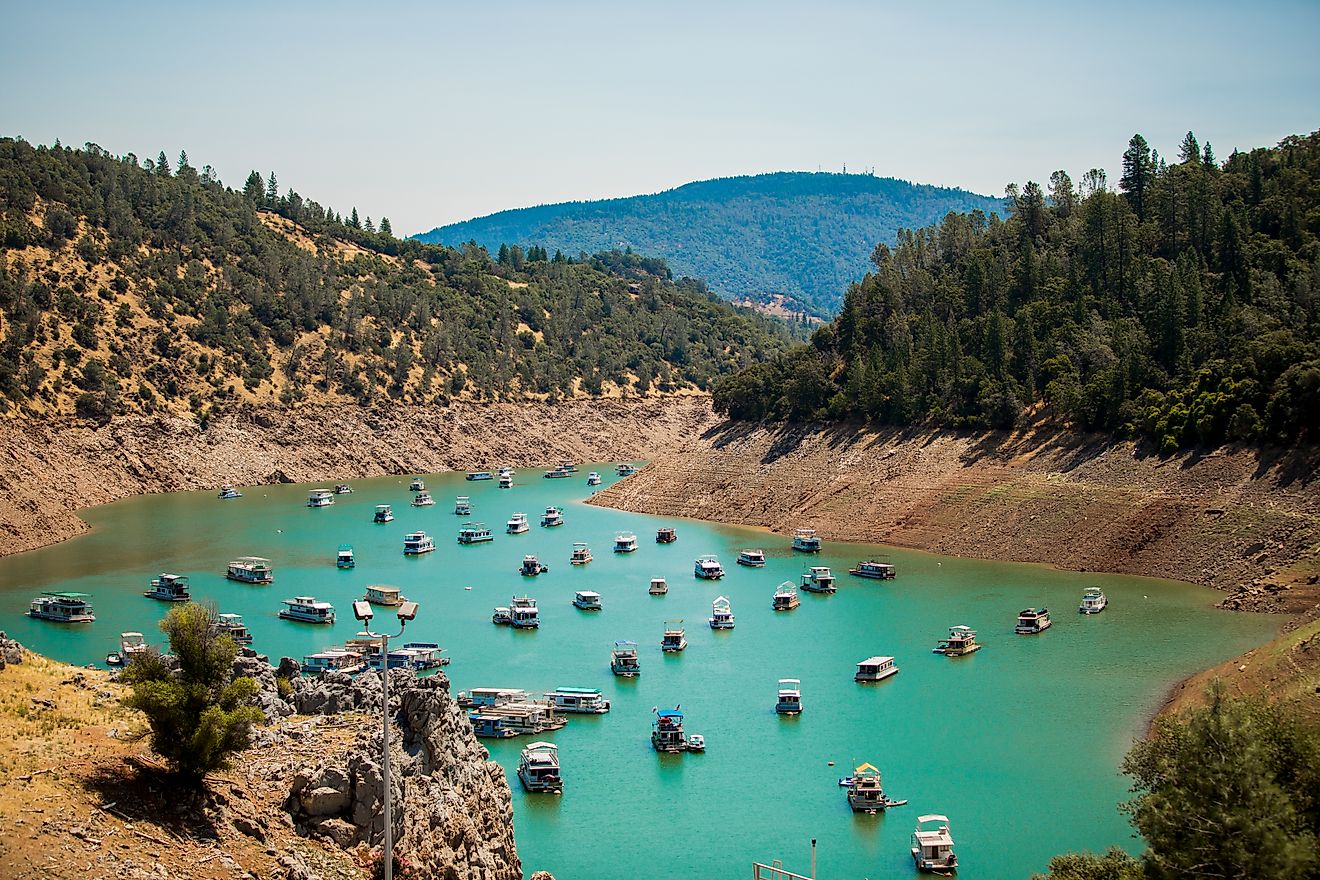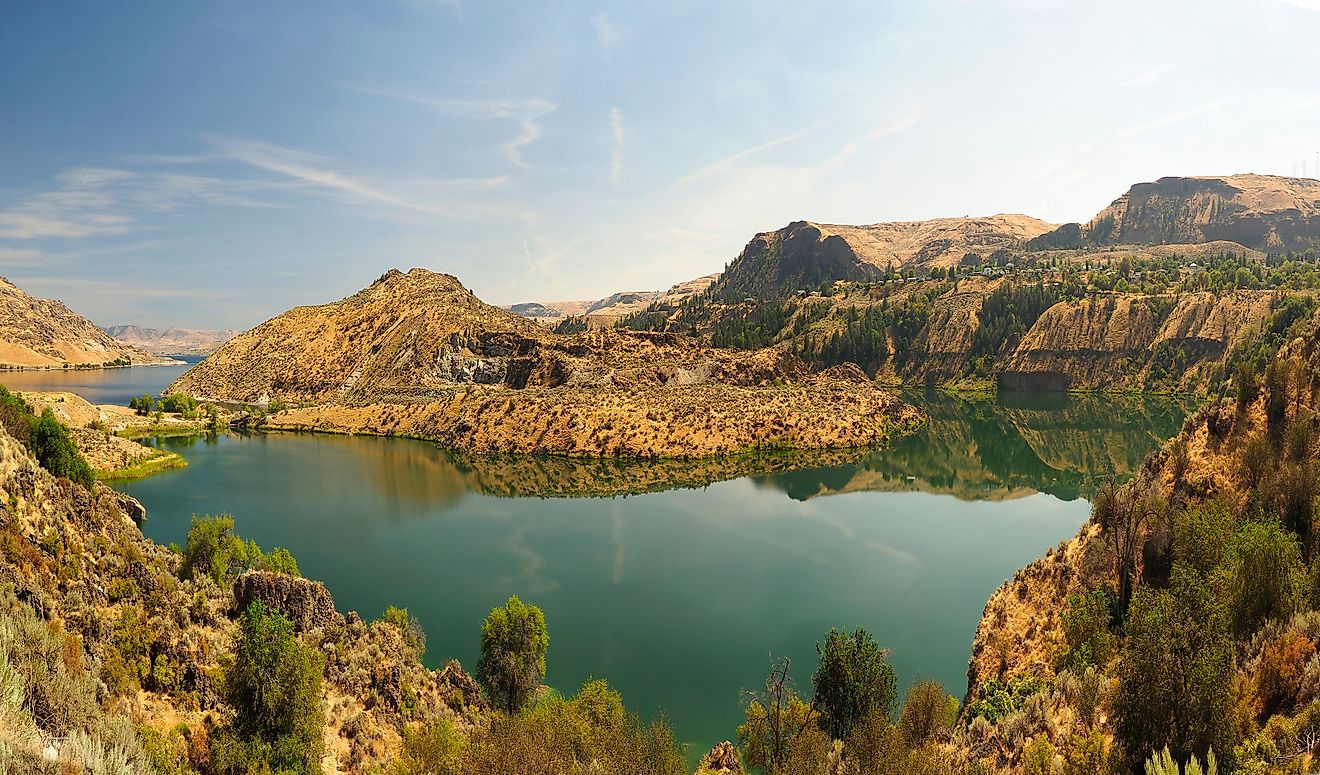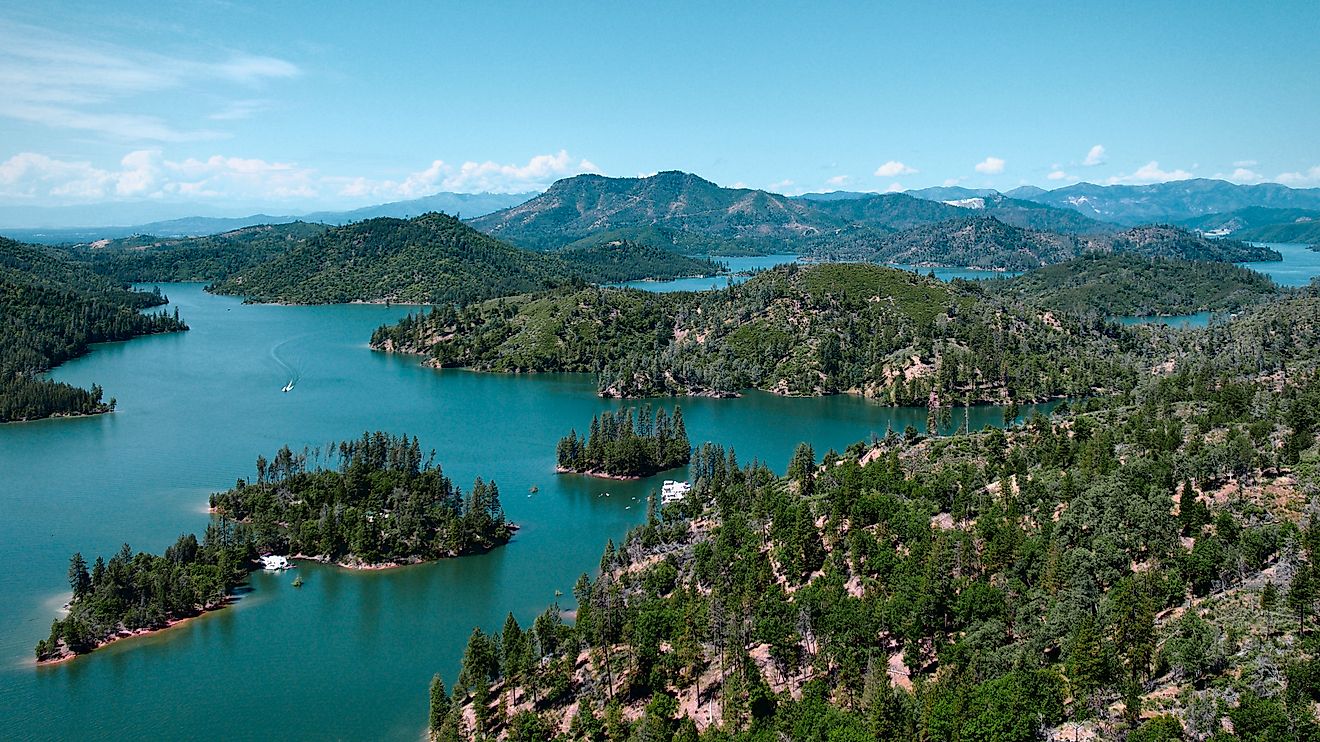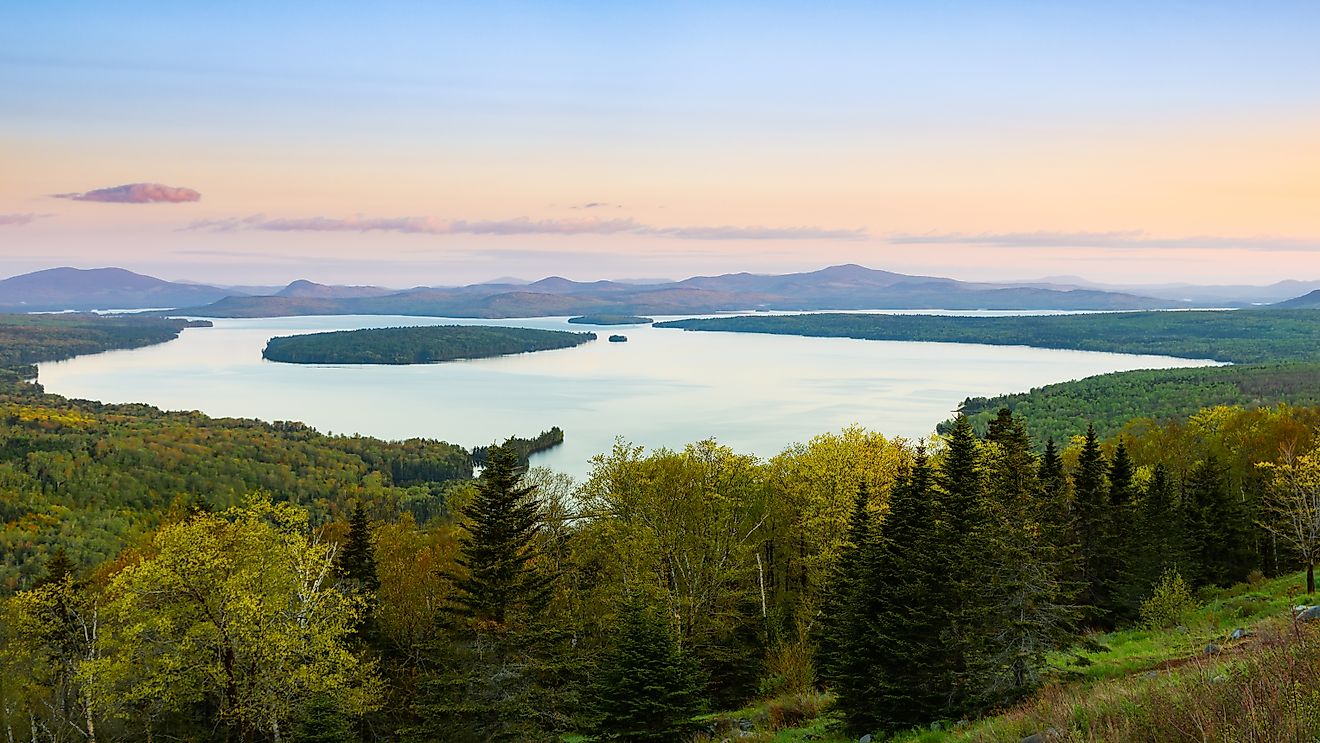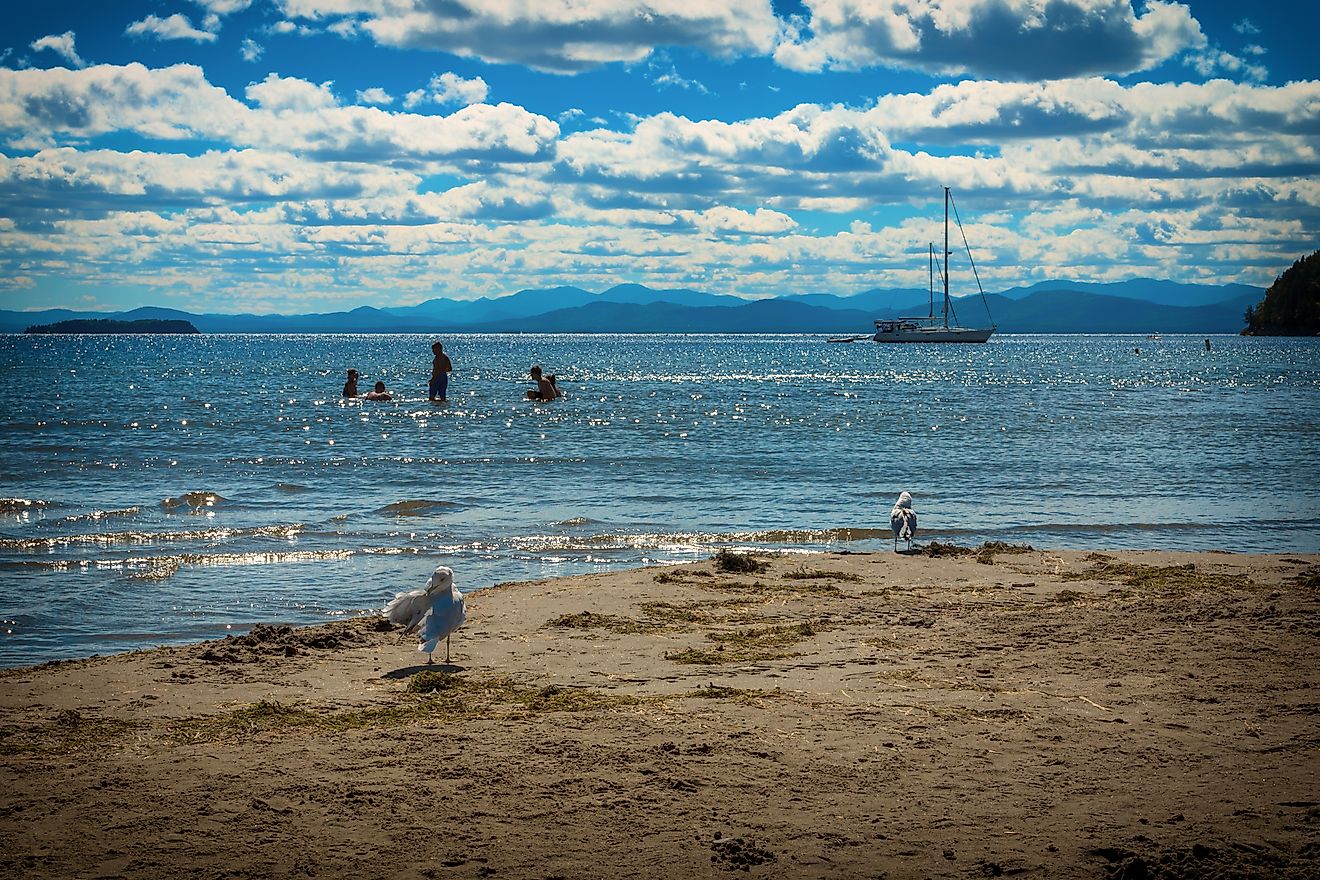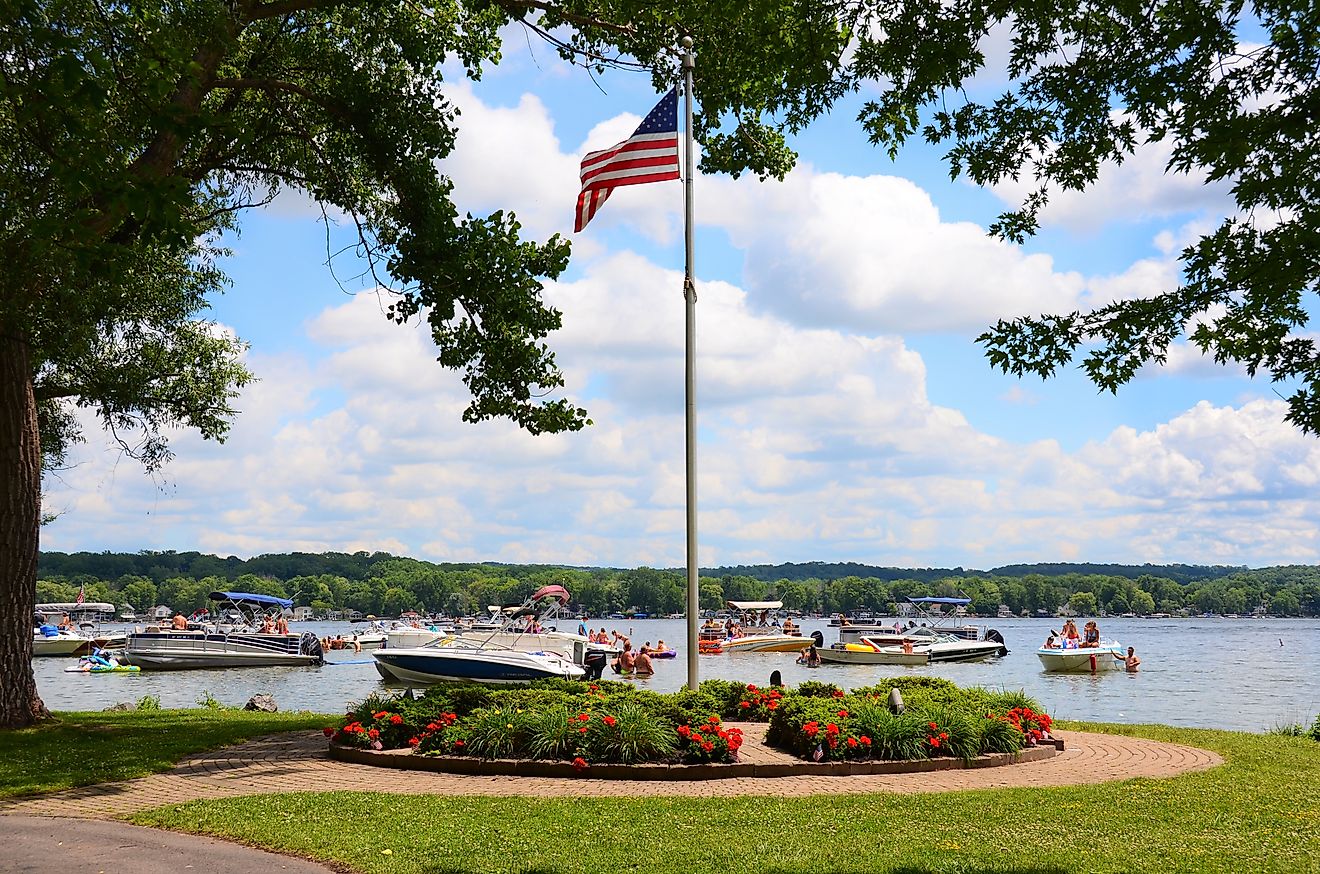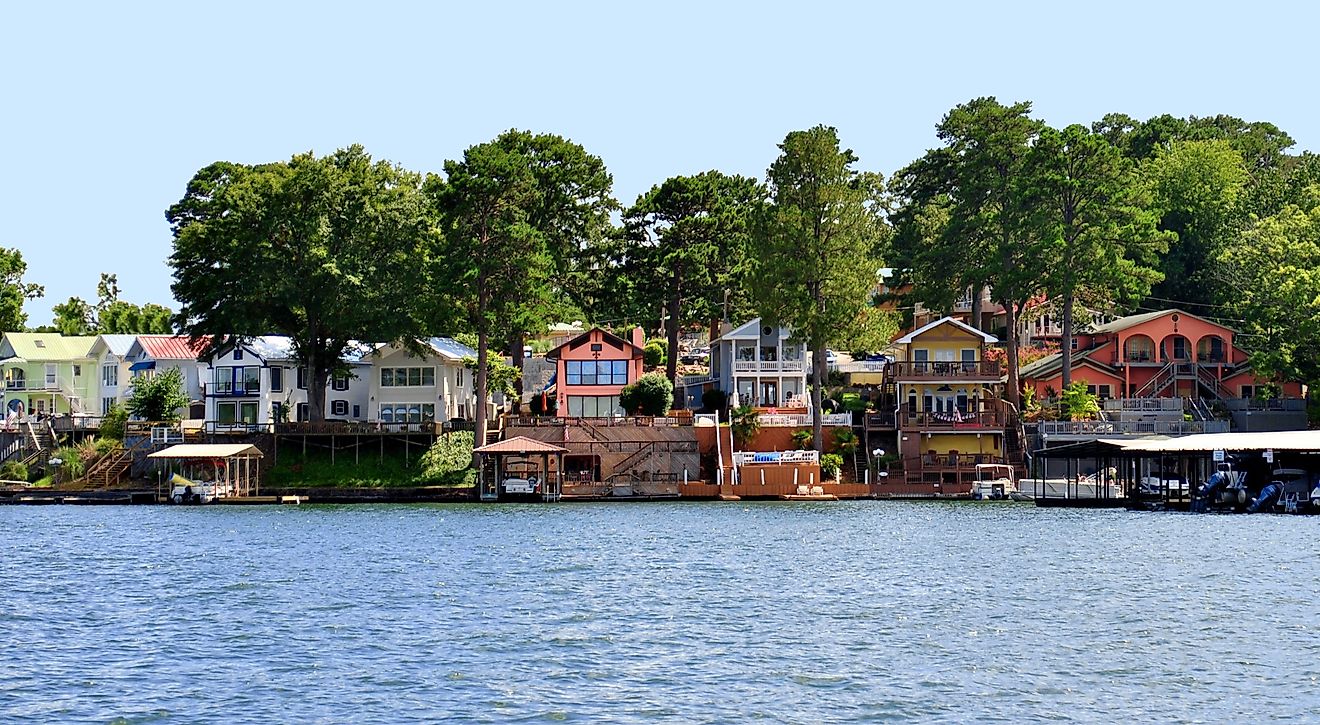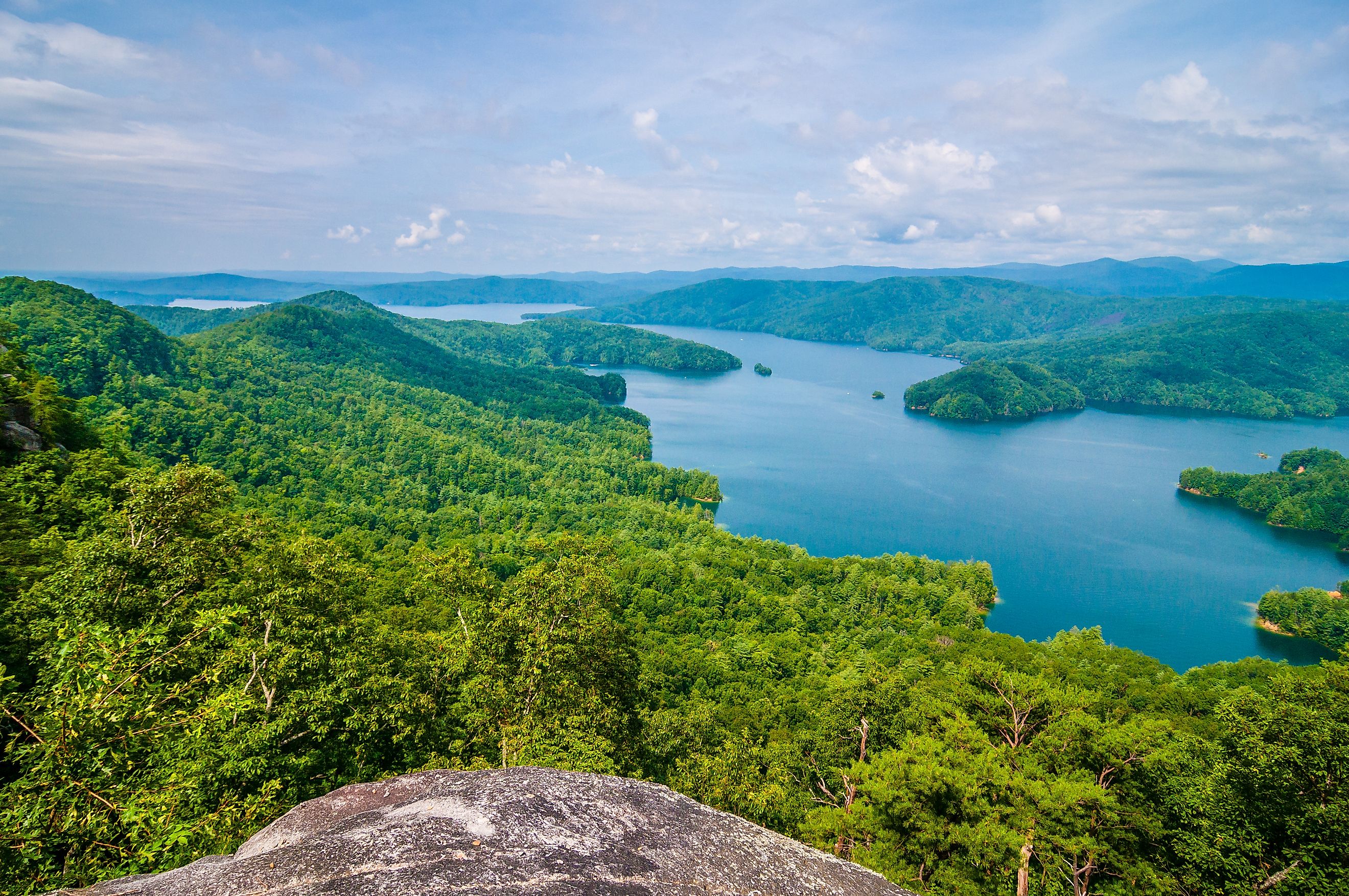
Lake Jocassee
In the far northwestern corner of South Carolina, where the Blue Ridge Mountains slip into the southern Appalachian foothills, Lake Jocassee stands out as one of the state’s most pristine and breathtaking natural treasures. At 7,500 acres and plunging to depths of 300 feet, it’s a man-made lake with a mystique that feels anything but artificial.
Fed by crisp mountain rivers and surrounded by protected wilderness, Lake Jocassee combines geological grandeur, rich Cherokee history, and record-setting fishing into a landscape that has remained largely untouched by modern development. For those seeking clarity—both in the water and the wilderness—it’s a place that continues to captivate.
A Lake Born from Power and Preservation

Lake Jocassee was created in 1973 through a partnership between the state of South Carolina and Duke Power (now Duke Energy). The project aimed to support hydroelectric energy production while managing water resources across the region. The result was the Jocassee Dam, a massive structure measuring 385 feet tall and 1,750 feet long. Water from Lake Jocassee powers the Jocassee Hydro Station, and downstream, it flows into Lake Keowee.
But while Lake Keowee quickly became a hotbed of lakeside development, Jocassee went the other direction. Most of the land surrounding the reservoir remains undeveloped and protected, lying within Devils Fork State Park and parts of the Jocassee Gorges, managed by the South Carolina Department of Natural Resources.
This difference in land use is part of what gives Lake Jocassee its rare character. From the shoreline, you won’t find sprawling neighborhoods or commercial marinas. Instead, you’ll see steep, forested slopes, cascading waterfalls, and a lake that feels more like a national park than a recreational reservoir.
Cold, Clear, and Deep: The Hydrology of Jocassee

One of the most remarkable qualities of Lake Jocassee is its water itself. Fed by four cool Appalachian rivers—the Whitewater, Thompson, Horsepasture, and Toxaway—the lake remains startlingly clear and cold year-round. This clarity supports healthy fish populations and also allows for excellent visibility, making the lake a favorite among divers.
Though most man-made structures were removed before the area was flooded, divers have discovered remnants still submerged beneath the water, including a lodge that remains intact below 300 feet and the Mount Carmel Baptist Church Cemetery—once featured in the film Deliverance—now lying beneath 130 feet of water.
The lake’s location at the foot of the Appalachians gives it dramatic topography. Sharp cliffs and gorges define the terrain, and several waterfalls spill directly into the lake, including Laurel Fork Falls, Mill Creek Falls, Moondance Falls, and Wright Fork Falls. These vertical drops into the turquoise water make for some of the most stunning views in the Southeast.
A Place of Legend: The Cherokee and Early Settlers
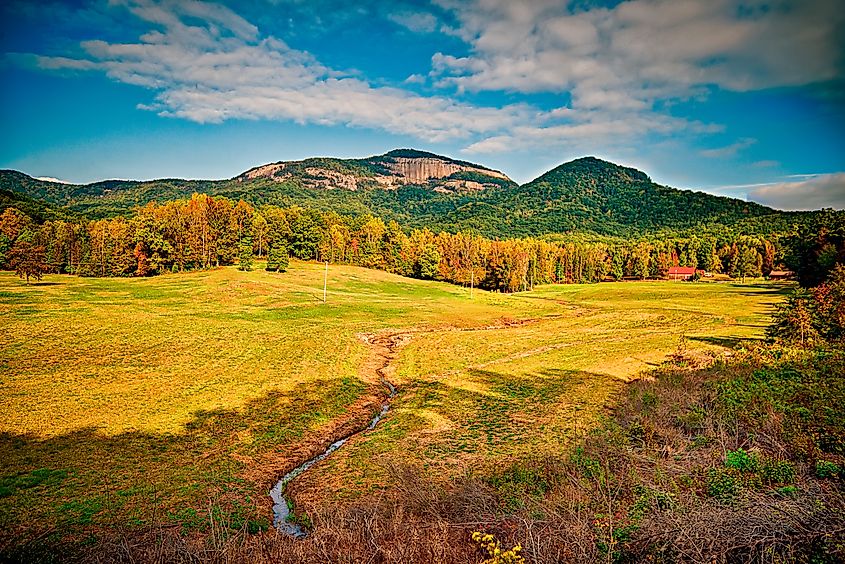
Long before it was a reservoir, the Jocassee Valley was home to the Cherokee Nation. The area held important trade routes and thriving villages. Nearby Keowee Town served as a key stop along the Cherokee Path, which connected settlements throughout the Southeast. In the 18th century, tensions between European settlers and the Cherokee escalated. First during the French and Indian War, then again during the American Revolution, conflict led to the ceding of much Cherokee land. By 1815, the last holdouts in Oconee County were relinquished.
European American settlers, many of Scottish and Irish descent, moved in shortly after. They established small communities and mills along the rivers that now lie beneath the lake. These remnants of pioneer life are part of what makes Lake Jocassee a layered, historic landscape, even if much of that history now lies underwater.
The Wildflower That Once Ruled the Gorges

Lake Jocassee isn’t just rich in history—it’s ecologically unique. The area was once the core habitat of the Oconee Bell (Shortia galacifolia), a rare wildflower known only to a handful of Appalachian counties. French botanist André Michaux first documented it in 1788, but the flooding of the lake covered large parts of its former range.
Still, biodiversity persists in the Jocassee Gorges region. Wildlife management began here in the 1930s, and trout stocking programs, law enforcement protections, and conservation initiatives have helped maintain one of South Carolina’s richest ecological zones. The nearby Eastatoee Gorge Heritage Preserve contains more than 1,000 acres of rare and threatened plant species.
Record-Setting Fishing Waters
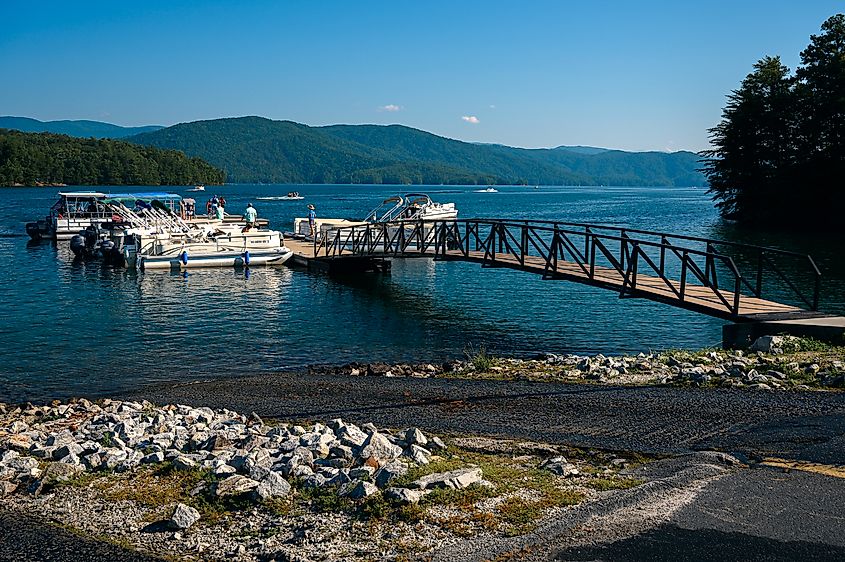
Lake Jocassee is a paradise for anglers, especially those chasing big game in deep water. The lake holds South Carolina state records for five fish species, including:
-
Redeye Bass – 5 lb 2.5 oz (2001)
-
Smallmouth Bass – 9 lb 7 oz (2001)
-
Spotted Bass – 8 lb 2 oz (1996)
-
Brown Trout – 17 lb 9.5 oz (1987)
-
Rainbow Trout – 11 lb 5 oz (1993)
Thanks to the lake’s cool temperatures and oxygen-rich depths, these fish thrive, making Jocassee one of the best freshwater fishing destinations in the Southeast.
Devils Fork State Park: Gateway to Jocassee
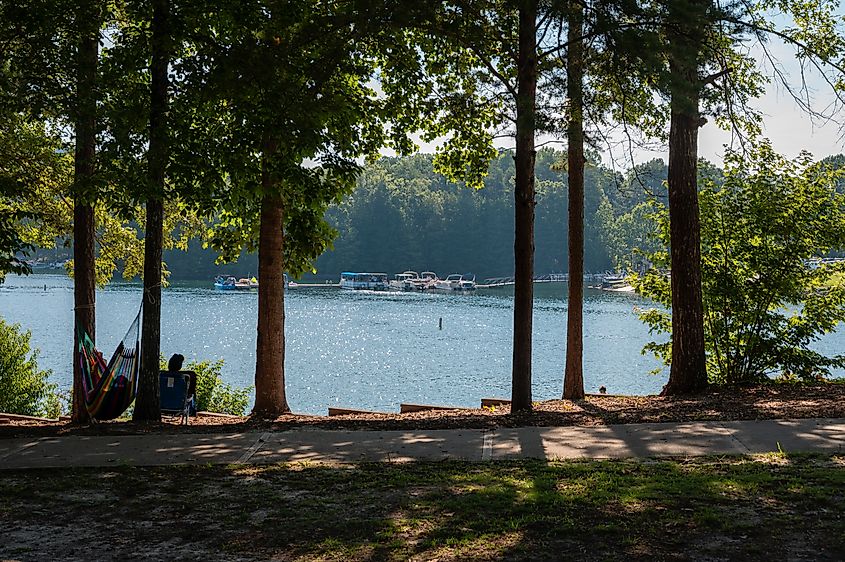
For those wanting to access the lake, Devils Fork State Park is the primary entry point. Located near Salem, South Carolina, the park offers boat ramps, kayak launches, camping, and a lakeside villa community available for rent. It's also the best place to see the Oconee Bell bloom each March, when visitors from around the country come to witness this rare botanical event.
Despite its beauty, Devils Fork rarely feels crowded. The limited number of access points and restrictions on shoreline development keep visitation relatively modest, preserving the lake’s wild feel.
Hydropower and Local Industry
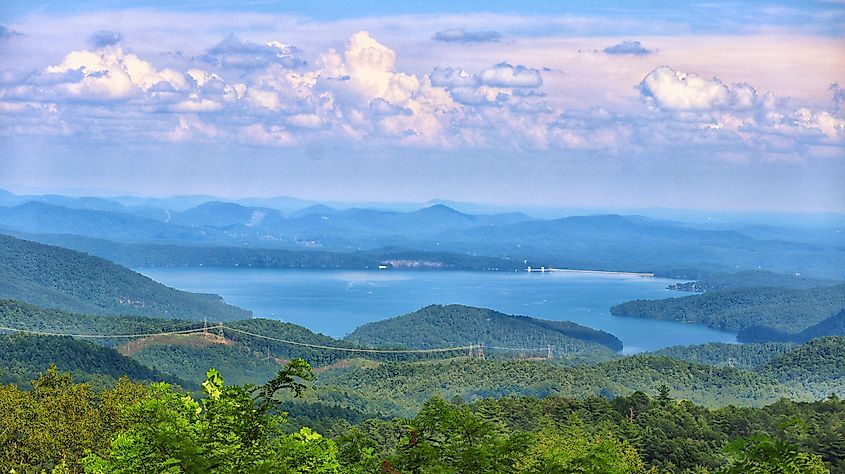
While Lake Jocassee is an outdoor wonderland, it also plays a key role in energy generation. The Jocassee Hydro Station is a 610-megawatt pumped-storage facility owned by Duke Energy. Nearby, the Bad Creek Hydroelectric Station adds another 1,065 megawatts. Both stations use the lake’s elevation to help store and generate electricity, supplying power to a significant portion of the Carolinas and providing jobs to the local community.
Preserved for Future Generations

Perhaps the most remarkable thing about Lake Jocassee is how well it has avoided the fate of so many other reservoirs. Where other lakes become ringed by condos, party boats, and floating billboards, Jocassee has retained its sense of remoteness and quiet.
That’s by design. Much of the surrounding land is owned by Duke Energy or protected by state agencies. These protections have made Jocassee not just a place to visit, but a place to cherish.
In 2012, National Geographic named the Jocassee Gorges one of “50 of the World’s Last Great Places”—a rare recognition for a spot in the eastern United States. With waterfalls tumbling from forested ridges into sapphire waters, it’s not hard to see why.
Frequently Asked Questions
Where is Lake Jocassee located?
Lake Jocassee sits in northwest South Carolina, near the towns of Salem and Sunset, just south of the North Carolina border.
Can you swim in Lake Jocassee?
Yes, the lake is open to swimming, and its clear, cool waters are popular with boaters and swimmers during the warmer months.
Are there hiking trails near the lake?
Yes, Devils Fork State Park offers hiking trails, and nearby areas like the Jocassee Gorges and Eastatoee Gorge Heritage Preserve have additional backcountry routes.
Is camping allowed near Lake Jocassee?
Yes, Devils Fork State Park has both tent and RV camping, as well as fully furnished villas for rent.
What is the best time to visit Lake Jocassee?
Spring and fall offer ideal temperatures and fewer crowds, but the lake is accessible year-round for hiking, fishing, and boating.
